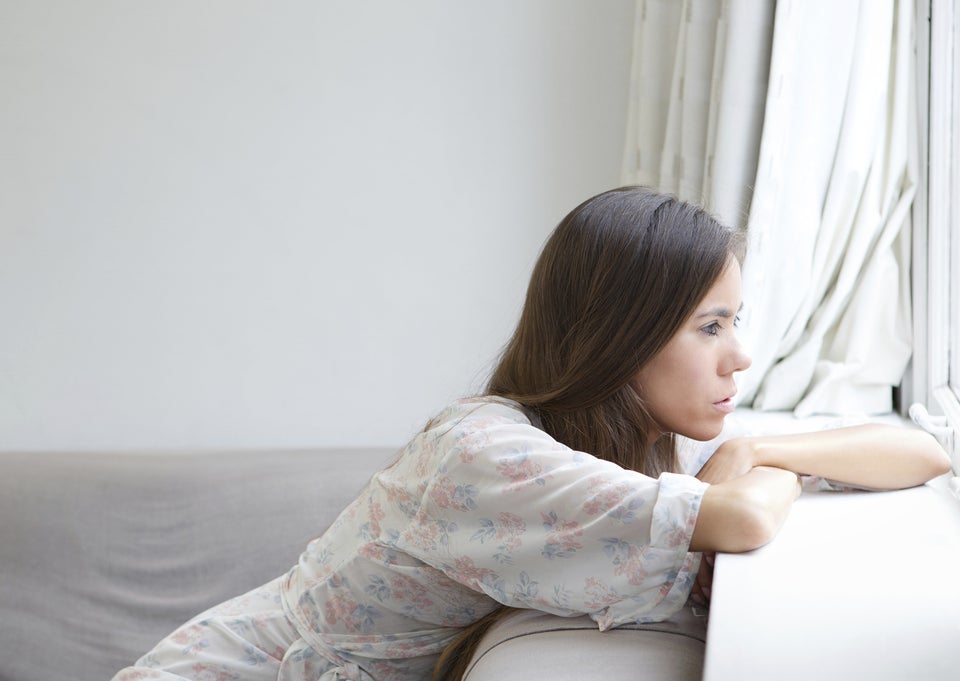
By Alex Orlov for Life by DailyBurn
Do dark, chilly days make your mood cloud over this time each year? You're not alone: Roughly 10 to 20 percent of Americans report feeling tired or sad when there are fewer hours of daylight in the winter months. With bone-chilling temperatures and blustery winds, it's easy to give in to laziness and snooze just a little longer instead of dragging yourself to that early Spinning class -- or, make a date with Netflix instead of bundling up and getting dinner with friends.
While many people can still function even if they're feeling a bit melancholy, for some, winter brings a clinical form of depression called seasonal affective disorder, also known as SAD. According to Kelly Rohan, Ph.D, professor and director of clinical training at University of Vermont, at least 2 percent of the population suffers from the psychiatric condition, but that percentage tends to increase in regions with shorter hours of sunlight. Researchers estimate that up to 10 percent of Alaskans experience SAD symptoms such as fatigue, overeating, loss of interest in activities and difficulty concentrating.
Another SAD factor? Genetics. Just like depression, your likelihood of experiencing seasonal affective disorder can increase if your family has a history of mood disorders. And surprisingly, gender may also play a role in your bleak winter outlook. Studies show seasonal affective disorder is four times more common in women than men. Though researchers have struggled to understand exactly what contributes to this gender difference, Rohan has one hypothesis. "Women [stereotypically] ruminate on feelings more than men," she says, and brooding on those sad sentiments can lead to more severe depression in some cases.
Beat The Blues
What causes this wintertime down-in-the-dumps attitude? Research published in the European College of Neuropsychopharmacology this October reveals that it's a biochemical imbalance that's at play. Come winter, people with SAD experience a significant dip in serotonin, the neurotransmitter responsible for mood, appetite, sleep, memory and libido.
"When someone notices significant distress or problems functioning in everyday activities, like performing at work and maintaining healthy relationships, that's the time to consult a professional for an evaluation," says Rohan.
But even if you don't suffer from full-blown seasonal depression, you may feel less social and more pessimistic come winter. "As the season changes, our circadian rhythms get impacted because the sunlight pattern has changed," says Ani Kalayjian, Ph.D, professor of clinical psychology at Columbia University. "If you know that you get less joyous in winter months, you have to start a preventative approach." After all, you prepare your home, car, garden and other things for the seasonal change, so why not your body? Kalayjian suggests evaluating the severity of your symptoms (energy level, appetite, desire to be social) and then exploring forms of treatment.
Fortunately, there are several easy ways to boost your mood if you're experiencing an energy dip this winter. Here are some of the best expert-backed strategies.
1. Soak up morning sunshine.
According to Kalayjian, winter blues will be worst in the mornings when you're rousing yourself from bed. She tells clients to open curtains as much as possible to get exposure to natural light right when the body is waking up.
2. Maintain your routine.
"The most helpful thing is to try to keep up everyday activities," says Rohan. Once daylight savings time occurs, don't neglect your favorite hobbies just because winter spurs an impulse to hibernate. You'll feel better knowing you're still making it to your weekly book club, basketball game or brunch with friends.
3. Work it out.
During a killer gym session, the brain works hard to override the temporary feelings of discomfort by telling the body to keep pushing. You'll naturally release endorphins, which will make you feel happier and even euphoric. A meta-review published in the American College of Sports Medicine Journal in 2013 suggested that, for some individuals, exercise might be comparable to therapy or anti-depressants as an effective treatment for depression.
4. Flip a switch.
Research suggests that light boxes can help up to 50 percent of people who suffer from SAD. The bright light emitted from these devices helps the body awaken in the morning and decreases the hormone melatonin that keeps us asleep at night. And for those seeking a quick fix: Studies show that light therapy can spur a mood lift in just several days. "Based on the literature, [light therapy] is a very effective treatment," says Rohan. However, since the FDA does not regulate light boxes, she recommends consumers pursue light therapy under the supervision of a professional. "It takes some trial and error to get it just right," she says, emphasizing that timing, positioning and potential side effects should all be discussed with an expert before you begin treatment.
5. Ditch the sugar.
It's common knowledge that too much of the sugary stuff will make us gain weight and puts us at risk for developing diabetes and certain cancers. And research shows that sugar has a sour effect on mental health, too. Countries that consume the most sugar have higher rates of depression, and scientists hypothesize that it hinders the body's ability to cope with stress and can worsen anxiety. Many people crave sweet and starchy foods in the wintertime because they provide a temporary energy boost, but these treats will ultimately leave you just as sluggish as before. Instead, opt for eating complete meals with good sources of protein and fiber.
6. Get outside.
Both Rohan and Kalayjian recommend breathing in some fresh air each day. Studies confirm that spending time outside can relieve stress, so bundle up and brave the cold for at least five minutes to lift your spirits. "It turns out that going for a walk in the morning after sunrise can be especially effective," says Rohan. "It gets light to the retina, but it's also physical activity." Two birds, one stone!
7. Develop wintertime interests.
Bummed that you can't play beach volleyball every weekend? Rohan recommends finding substitutes for the mood-enhancing activities you enjoy in the summer. "Having fun is central to having a good mood," she says. "What are things to do in winter that are fun to do?" Strap on some snowshoes, check out a new fitness class, take a spin on an ice rink or step up your game in the kitchen -- you just might find a new passion.
8. Practice relaxation.
Some down dog could help you get out of the dumps. Practicing yoga, studies show, can alleviate symptoms of depression and anxiety. Plus, preliminary research on meditation reveals that breathing exercises and mindfulness exercises can actually change neural networks and decrease stress. Kalayjian also recommends progressive relaxation, a technique that promotes body awareness by tensing and relaxing muscle groups throughout the body.
9. Book a trip.
Prepare for takeoff, because quality vacation time will certainly boost your mood. Those that suffer from seasonal depression will benefit from additional sunshine if they head south, but taking a break from work is important for anyone's mental health. Studies show that people even experience pleasure from anticipating trips. "Across the board, SAD patients will tell you they feel better [after vacation]," says Rohan. But she cautions against depending on getaways for happiness. "I think it's important to learn to tolerate the place where you live instead of jumping on a plane." While you count down the days 'til your beach holiday, find ways to get joyous about the winter wonderland in your own backyard.
If you struggle with serious and continuous depressive symptoms, be sure to reach out to a healthcare provider to discuss your condition. For additional information on seasonal depression, head to the National Institute of Mental Health.
